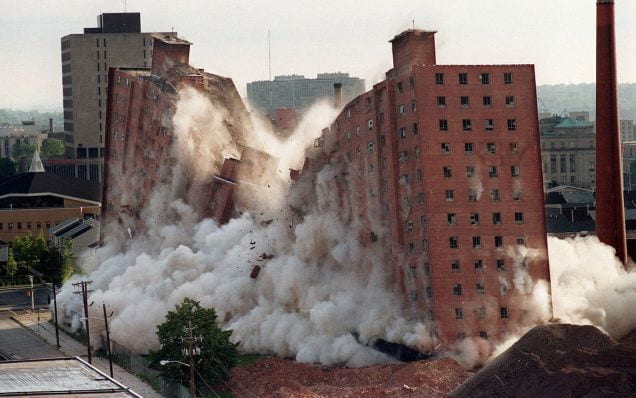Published to my website privately, under consideration for publication in Journal of American History
How market forces undermined the promise of public housing in Newark
.
.
To bring about integration, the first to do is to do it. [….] The change-over to a policy of nonsegregation is not so difficult and troublesome as one anticipates. [….] If a housing authority shows complete sincerity in the change and never retreat from their announced position with respect to non-segregation, the change will be successful. This, in any case, is what we have found to be true in Newark.
– Newark Housing Authority Executive Director Louis Danzig, 1952
In 1962, the future of racial integration in Newark looked promising. Newark’s newly elected Mayor Hugh Addonizio praised the movement toward racial integration before a meeting of the United States Commission on Civil Rights in Newark City Hall. He described the apparent success of urban renewal to build high-quality public housing projects in black neighborhoods. Thousands of families once lived in wood frame tenements without central heating, interior plumbing, and private bathrooms. They now lived in public housing where, for the first time in their lives, they had their own bedrooms, bathrooms, and year-round steam heating.
Newark’s program of urban renewal cost taxpayers at least 128 million in federal funds (1.4 billion in 2020 dollars) and 53 million in local funds (550 million in 2020 dollars). This program costing by 19677 two billion (adjusted for inflation) gave Newark the fifth most expensive urban renewal program in the nation after New York, Chicago, Philadelphia, and Boston. An estimated 55,000 more were displaced from their homes in the process, 45,000 for urban renewal and 10,000 for highway construction. By the end of this program, some 37 thousand people, representing about one in every ten Newark residents, lived in public housing.
Just eight years before in 1954, the U.S. Supreme Court ruled in Brown v. Board of Education that separate was not equal and that racial segregation laws were not legally enforceable. In the few years before Brown, Newark had already moved to desegregate public housing and to assign residents to whichever of the city’s approximately fourteen public housing projects they preferred. Newark public schools also seemed to offer the promise of racial integration. The city’s population was 66 percent white in 1960 and 34 percent black. This would mean that every public school, if fully integrated city wide, would have two white children for every black child. The mixed incomes and races across Newark seemed to offer the possibility of a future egalitarian metropolis: schools and neighborhoods of both diverse races and diverse incomes.
For all its promises, this program of urban renewal failed spectacularly. By the 1980s, opponents and activists described urban renewal and public housing as “The Second Ghetto,” as high-rise slum housing as dangerous as the ghettoes they were supposed to replace. By 2010, most of Newark’s public housing from the urban renewal age had been demolished. Other lands cleared of homes to build urban renewal projects never found the financing to build and remain vacant lots. Among dozens of high-rise towers of public housing containing thousands of apartments, all but seven towers were demolished. The urban poor were expelled from public housing towers that had become concentrations of crime, drugs, poverty, and decay.
The program had fallen far from its hopeful origins when President Harry Truman signed urban renewal into law with the 1949 Housing Act. Truman announced at the program’s launch: “The private housing industry cannot in the foreseeable future provide decent housing for these families. Their incomes are far too low to cover the cost of new housing of any adequate standard. [….] We have a national responsibility to assure that decent housing is available to all our people.” By 1963 at the height of the civil rights movement, James Baldwin famously characterized urban renewal as something “most northern cities now are engaged; it is something called urban renewal, which means moving the Negroes out. Getting it means Negro removal; that is what it means. And the federal government is an accomplice to this fact.” In the span of these fourteen years, a program Truman described as the fight to create “decent housing” had evolved into what Baldwin characterized as “Negro removal.”
The reasons behind the failure of public housing are more complex than simple reasons like “Negro removal,” poorly designed architecture, or state hatred for black people. Urbanist thinker Jane Jacobs blamed the failure of public housing on architecture. High-rise towers of public housing, she claimed, were too tall and too modern an architecture for families used to living in old tenements, Victorian townhouses, and rural farms. But the failure of social housing in Newark was not caused by poor design choices, low-quality architecture, or the supposed prejudice of the people who built and directed the program of urban renewal. Nor was the failure of social housing caused by the poor families, and especially rural black families who lived in these houses and were – the legend claims – unprepared for urban life. Instead, the failure has more do with employment discrimination, urban abandonment, and market policies that chose to under-invest in Newark and its people. These private forces collectively ensured the public failure of the Newark Housing Authority’s two billion dollar program of urban renewal.
Fundamentally, public housing in Newark was a two-part promise. Good homes at affordable prices for poor families were one half the promise: a promise met and provided by the public section. Economic mobility and non-discrimination in employment for those living in public housing was the missing half of the promise. It was a promise that the private sector failed to meet in an age of de-industrialization and suburbanization.
.
Based on archival records, planning documents from the Newark Housing Authority, and old newspaper articles, read the full report on how public housing in Newark was designed to fail. →
.



